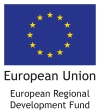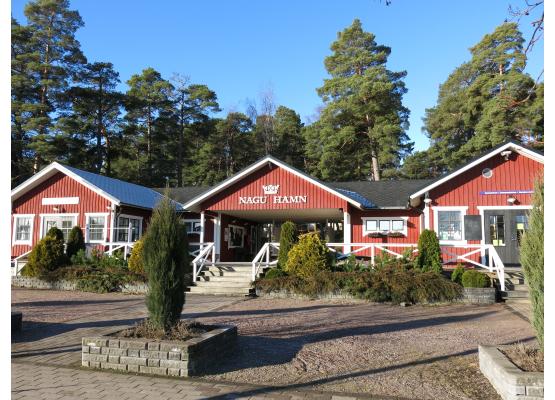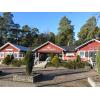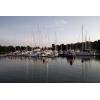P3 Well-connected region
3.2. Improved services of existing small ports to improve local and regional mobility and contribute to tourism development
Archipelago and Islands
01.07.2016 - 31.03.2020
€1 045 633
€784 224
The project will make a joint architectural vision for small ports in Nagu, Dalsbruk, Lickershamn and Ronehamn, to address the need for high-quality, green, functional and accessible services. By making a joint plan and joint investments, the same high quality level of construction in participating ports can be guaranteed. The joint vision will be used by the individual ports in order to make the investments executable on the local level. The ports will invest into improved service buildings that are green, family-friendly and accessible to all visitors.
Joint marketing will inspire visitors to travel between regions and will show them that it is possible to get high quality services in several small ports in the archipelago, even off-season. The small ports will develop a network between each other that will be used for further joint development and marketing, and the ports will set a standard for other popular small ports to strive for.
The project can be a model for how other small Baltic Sea Region ports can upgrade their infrastructure and use joint marketing in the future.
Pargas stad
Country: FI
Partner budget: 379.020 EUR
Amount of ERDF funding: 284.265 EUR ERDF
Kimitoöns kommun
Country: FI
Partner budget: 234.301 EUR
Amount of ERDF funding: 175.725 EUR ERDF
Region Gotland
Country: SE
Partner budget: 214.312 EUR
Amount of ERDF funding: 160.734 EUR ERDF
Lickershamns Fiskareförening
Country: SE
Partner budget: 218.000 EUR
Amount of ERDF funding: 163.500 EUR ERDF
Achieved results
FamilyPorts provides enjoyable stay for the entire family
Four small ports (two in south-west of Finland and two on Gotland island in Sweden made investments into service buildings and green technology. The new/improved service buildings also provide the companies running the ports an opportunity to boost the marketing of the ports. The joint marketing is visible in the website FamilyPorts.
The joint architectural vision for a family-friendly port was used as an inspiration for all ports. The vision may also be used in the future.
Meetings with local stakeholders were the most useful way of communication. The project communication during the investment phases was mainly targeted to the local communities in the vicinity of the ports. Meetings were held with the local stakeholders who had an opportunity to have an impact on how the investments were planned and carried out. All partners followed the local legislation concerning the hearing of stakeholders, but in general the partners took the stakeholders’ opinions into consideration to a larger extent than the legislation demands.
Concrete results:
FI_Nagu: A service building with a family sauna and a separate dish washing station were constructed, and elected boat chargers were bought.
FI_Dalsbruk: Service building, electricity system, solar panels and boat charger.
SE_Ronehamn: The original time schedule had to be changed, but in the end all planned investments were implemented. A new service building was built, including solar panels.
SE_Lickershamn: The service building was renewed, and a sanitation building was built, according to plan. Solar panels were installed and a module for automatic check-in was installed.
Feedback from the port entrepreneur in Dalsbruk:
“The solar panels now produce one third of the electricity needed in the port. The visitors are getting more and more conscious about the environment and many of them have been asking for information about the solar panels. It is nice that we can be a model for environmentally friendly energy production. The number of toilets has been doubled, and this has been much appreciated by our customers. The new dish washing station and the washing machines have also been appreciated. All in all, we are very pleased with the result of the project.”
The most important cross-border value was the opportunity to discuss practical matters and to see how problems have been solved in other ports. Sharing experiences and learning from each other is still very important and a needed activity for partners from different countries.
- 4 small ports with improved services
- Investments in service buildnings
- Joint architectural vision for family-friendliness
- Sustainability with green technology







